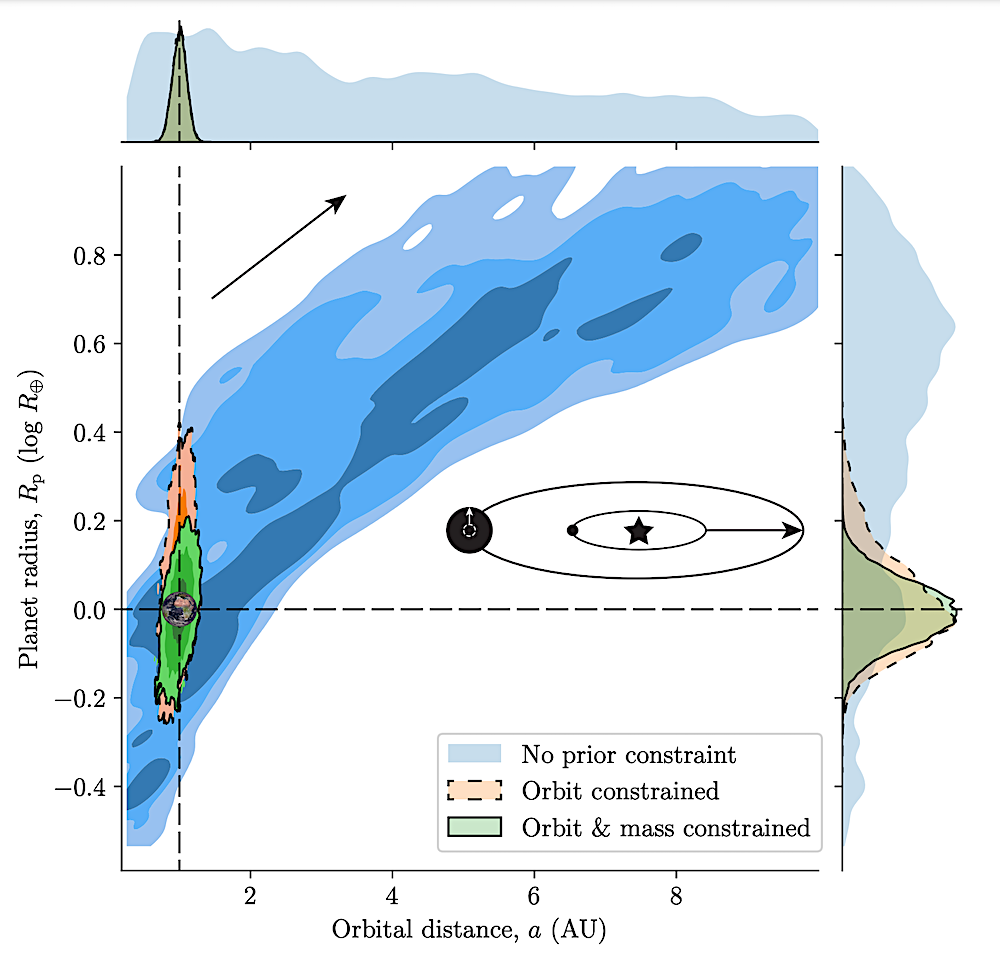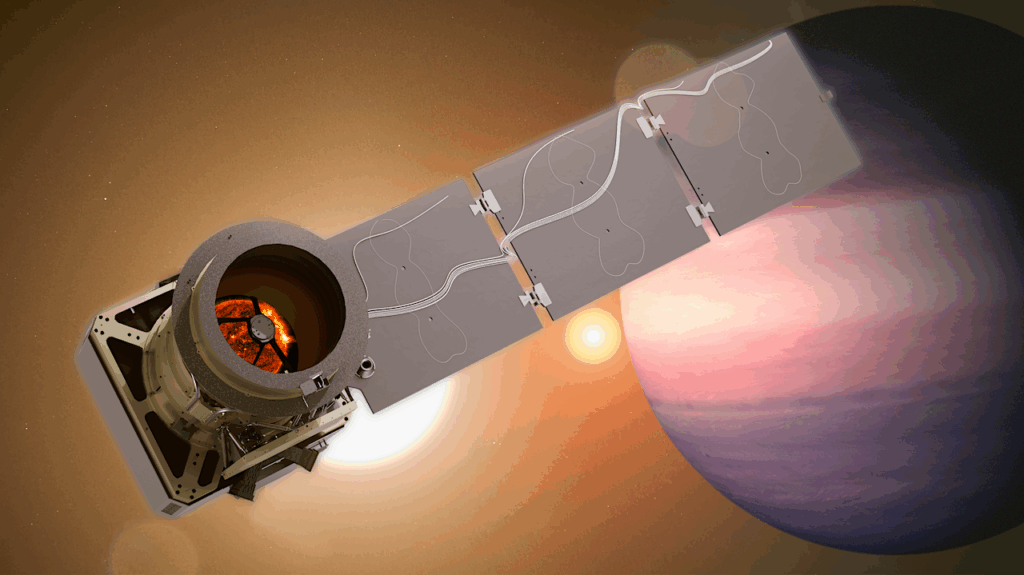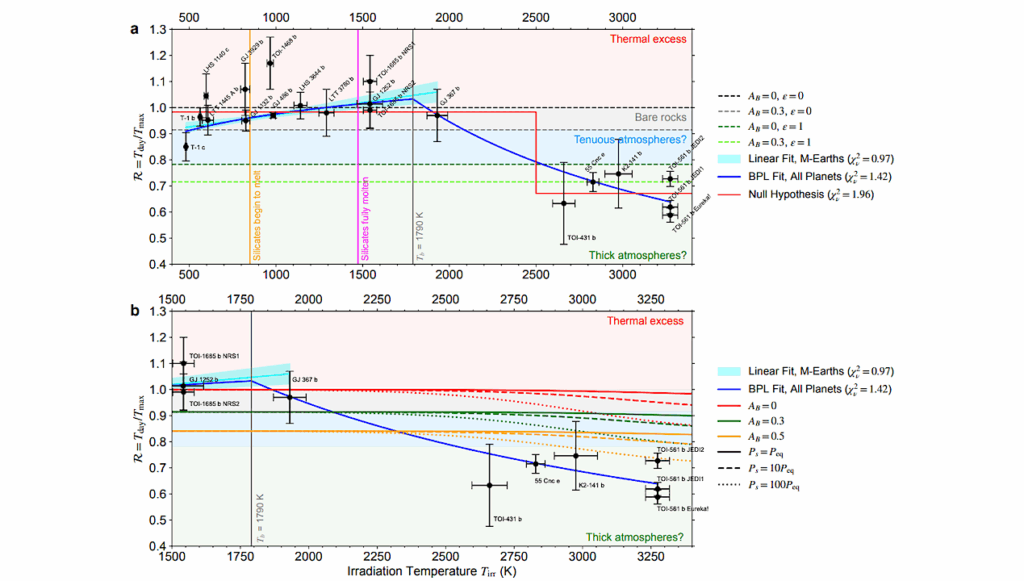Influence of Orbit and Mass Constraints on Reflected Light Characterization of Directly Imaged Rocky Exoplanets

Survey strategies for upcoming exoplanet direct imaging missions have considered varying assumptions of prior knowledge. Precursor radial velocity surveys could have detected nearby exo-Earths and provided prior orbit and mass constraints.
Alternatively, a direct imaging mission performing astrometry could yield constraints on orbit and phase angle of target planets. Understanding the impact of prior mass and orbit information on planetary characterization is crucial for efficiently recognizing habitable exoplanets.
To address this question, we use a reflected-light retrieval tool to infer the atmospheric and bulk properties of directly imaged Earth-analogs while considering varying levels of prior information and signal-to-noise ratio (SNR). Because of the strong correlation between the orbit-related parameters and the planetary radius, prior information on the orbital distance and planetary phase yield tight constraints on the planetary radius: from Rp=2.95+2.69−1.95 R⊕ without prior knowledge, to Rp=1.01+0.33−0.19 R⊕ with prior determination of the orbit for SNR=20 in the visible/near-infrared spectral range, thus allowing size determination from reflected light observations.
However, additional knowledge of planet mass does not notably enhance radius (Rp=0.98+0.17−0.14 R⊕) or atmospheric characterization. Also, prior knowledge of the mass alone does not yield a tight radius constraint (Rp=1.64+1.29−0.80 R⊕) nor improves atmospheric composition inference.
By contrast, because of its sensitivity to gas column abundance, detecting a Rayleigh scattering slope or bounding Rayleigh opacity helps to refine gas mixing ratio inferences without requiring prior mass knowledge. Overall, apart from radius determination, increasing the SNR is more beneficial than additional prior observations.

Orbital distance and planet radius joint/bivariate (center) and marginal/univariate (top and right side) posterior distributions for different scenarios of prior knowledge and for the vNIR and SNR = 20. The contours of the 2D posterior distributions denote the 1, 2, and 3 sigma levels, encompassing 68%, 95%, and 99.7% of the observed values, respectively (note that the relevant 1, 2, and 3 sigma levels for a 2D distribution of samples are 39.3%, 86.5%, 98.9% of the volume, and correspond to the 68%, 95%, and 99.7% for 1D distributions). Earth-like input values are depicted with dashed horizontal and vertical lines. The small image of Earth indicates its position in the diagram. The sketch illustrates the degenerate relationship between increasing orbital distance and increasing planet radius, in yielding equivalent amount of reflected light. A larger planet orbiting further away from its host star may essentially reflect the same amount of light than a smaller planet but closer from the star. As a result, if the orbit-related parameters are known or constrained, the range of planet radius yielding the same amount of reflected light is necessarily restricted. Retrieval results are given in Table 2. — astro-ph.EP
Arnaud Salvador, Tyler D. Robinson, Jonathan J. Fortney, Mark S. Marley
Comments: Accepted for publication in ApJL
Subjects: Earth and Planetary Astrophysics (astro-ph.EP); Instrumentation and Methods for Astrophysics (astro-ph.IM); Geophysics (physics.geo-ph)
Cite as: arXiv:2406.07749 [astro-ph.EP] (or arXiv:2406.07749v1 [astro-ph.EP] for this version)
Related DOI:
https://doi.org/10.3847/2041-8213/ad54c5
Focus to learn more
Submission history
From: Arnaud Salvador
[v1] Tue, 11 Jun 2024 22:08:43 UTC (39,790 KB)
https://arxiv.org/abs/2406.07749
Astrobiology








